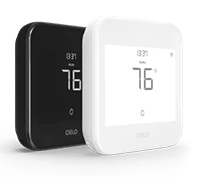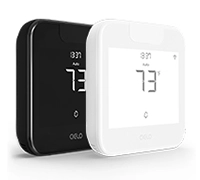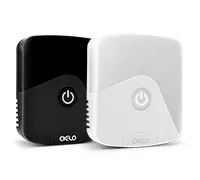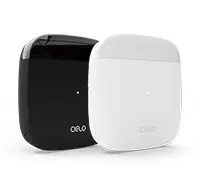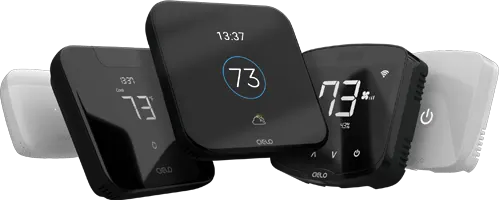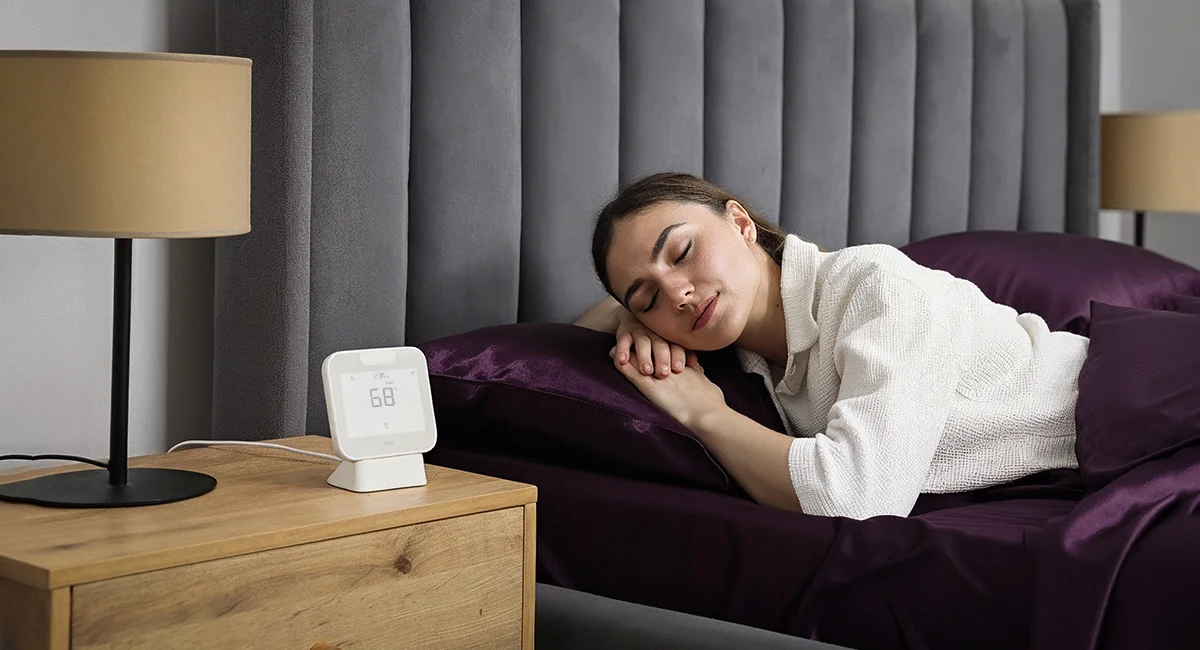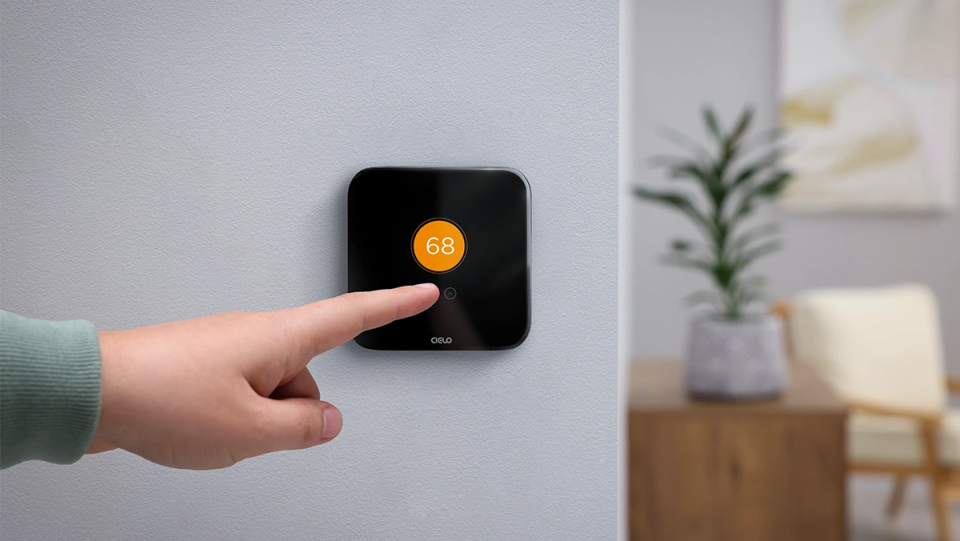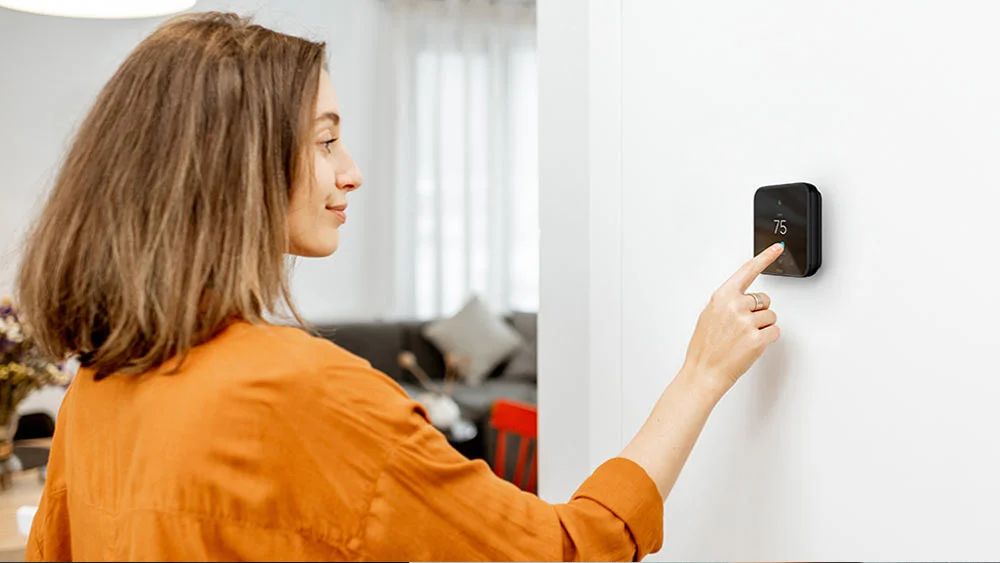The Emergency Heat setting on your thermostat can be a lifesaver in frigid climates.
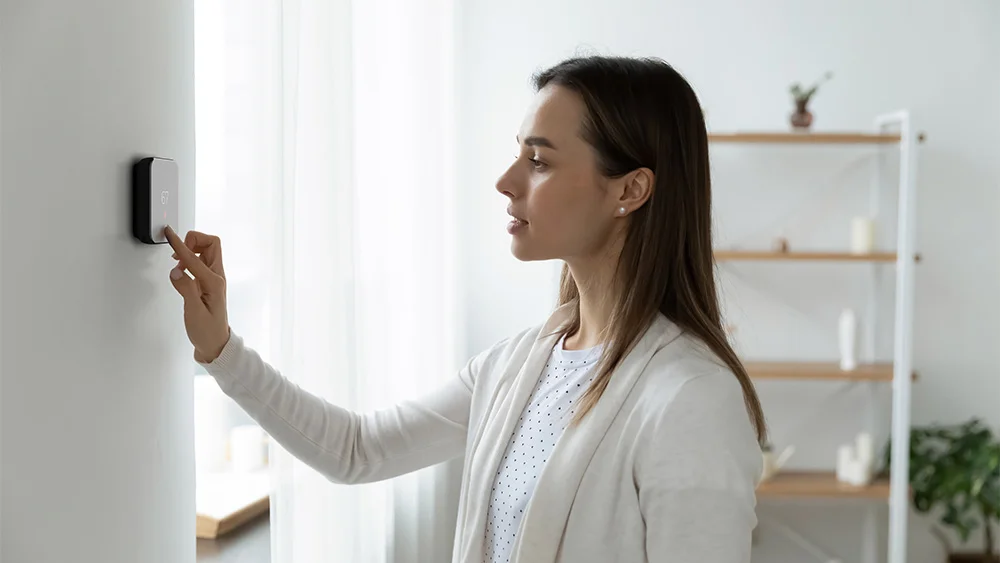
Key Takeaways
- Emergency heat is a backup heating system that kicks in when the heat pump can’t work efficiently in freezing temperatures.
- You have to manually turn on EM heat when required.
- Emergency heat costs more and should be used only when necessary to avoid high energy bills.
The emergency heat, or EM Heat setting, is an important part of your home heating arsenal. As temperatures start to plummet, you want to make sure there’s no threat to your home comfort. You need a backup plan when your heat pump can’t handle the extreme chill or decides to act up. Instead of shivering in the cold while waiting for repairs, you can lean on the EM heat setting to keep your home warm and toasty!
Emergency heat is often used interchangeably with Aux or Auxiliary heat – but more on that later. If you have the EM Heat and/or Aux Heat setting on your thermostat, you have second-stage heating or a backup heating source! While the heat pump is your main source of heating, you have another system ready to step in when the heat pump can’t keep up.
What is emergency heat? How can it be switched on? Is emergency heat expensive to run? How does emergency heat differ from auxiliary heat? Read on to learn everything there is to know about EM Heat.
What Is Emergency Heat?
The emergency heat setting is for precisely as its name implies – emergencies. While heat pumps are, without a doubt, very energy efficient and reliable, they can only warm your home when outside temperatures are above freezing.
Other heating systems can heat your home in extreme weather conditions. The downside? They’re not exactly energy efficient.
Let’s look over how heat pumps work. Heat pumps don’t create hot or cold air. Instead, they work by extracting heat from the outdoors and using it to warm your home. As long as the temperature is above 40F, this process works seamlessly. However, below this temperature, the heat pump can’t find enough heat to transfer and fails to keep your home warm.
Modern HVAC systems pair the two heating sources together to provide the utmost energy efficiency and comfort. When the temperature is mild, your heat pump operates to provide the necessary heat. As soon as the mercury plummets, you need a secondary heating source. This secondary system could be electric heat strips, a gas furnace, or an oil furnace.
Advancements in technology have led to the development of cold-climate heat pumps. These systems work similarly to traditional models but are specifically engineered to perform in much colder conditions, often down to temperatures as low as 5F or even lower. However, for homes without cold-climate heat pumps, emergency heating can be really helpful.
How Does EM Heat Work?
You can turn on the EM heat using your thermostat; it will have the emergency heat settings labeled E or EM heat. Some thermostats only have an Aux heat option. It will work the same way, and once you switch to Aux heat, your backup heating will be turned on.
When you activate the emergency heat on your thermostat, the heat pump compressor stops, and the backup heating system takes over. The blower in the air handler continues to operate, but instead of using outdoor heat, it relies on heat from an electric heating element or a gas or oil burner.
The system remains in EM heat mode until you manually turn it off. Once you do, the backup heating shuts down, and the heat pump compressor resumes operation.
Equip your HVAC system with smart features and achieve the perfect balance between comfort & savings.
Learn more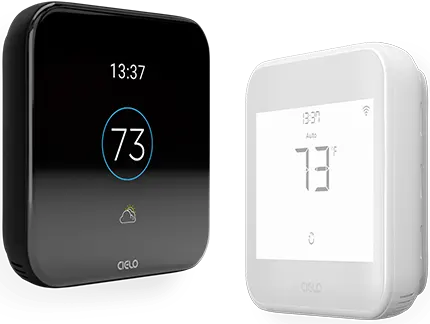
When to Use Emergency Heat?
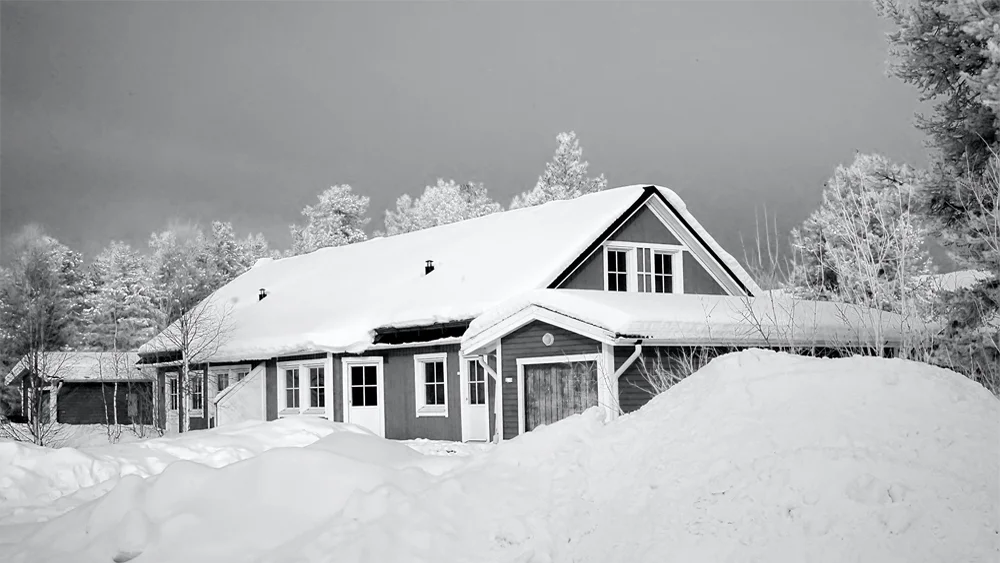
You should use your emergency heat settings in specific situations when your heat pump is unable to effectively maintain the desired home temperature. Once your desired temperature is reached, you should promptly switch off emergency heat. If you have accidentally turned on the emergency heat, locate the settings on your thermostat and turn it off immediately.
Unnecessary usage of emergency heat can significantly spike your heating bills and contribute towards a larger carbon footprint. The setting can also be taxing on your backup heat system, which was designed to be used for short periods in extreme circumstances.
Here are some scenarios where it’s appropriate to use emergency heat:
-
Your Heat Pump Is Not Working
Imagine it’s bitter cold, you’re cozily nestled in the comfort of your warm home, but suddenly, your heat pump stops working. Technicians can take hours or days to come for a visit. With emergency heat, you have the peace of mind of knowing that if your main heat pump suddenly malfunctions in the bone-chilling grip of winter, you can switch on the EM Heat setting and stay warm.
-
Heat Pump Is in Defrost Mode
Ice or frost commonly develops on the coils of your outdoor HVAC system. Most heat pumps run an automatic defrost cycle to melt this away and switch to your backup heat source for warmth.
-
Heat Pump Is Going Through Maintenance
You will have to switch off the heat pump during repairs and maintenance. To heat your home during this downtime, you can switch on EM Heat to provide the necessary heating.
Related: Your Ultimate Heat Pump Maintenance and Care Guide for 2025
-
Weather Is Below Freezing
Heat pumps are designed for milder weather. Thus, when it gets extremely cold, and your heat pump struggles to extract heat from the outside air, it won’t be able to heat your home as desired. This is when either based on your thermostat settings, it will automatically switch to AUX, or you will need to manually enable EM Heat – especially if your thermostat can’t detect outdoor temperature.
Auxiliary Heat vs. Emergency Heat
While aux and emergency heat are interchangeably used, they have different operating mechanisms.
Aux heat is a term used when the thermostat automatically turns on the supplement heat source in cold temperatures. It usually kicks in when there’s a 2-3 degree difference between your thermostat setpoint and your indoor temperature. It operates for only a few hours and will turn off once your desired temperature is achieved. When it’s activated, the heat pump powers a heat strip within the system to provide extra warmth. However, the auxiliary heat will stop working if your heat pump freezes due to extreme cold.
EM heat, on the other hand, is used when you have to force your unit to bypass the first-stage heating and use the secondary heat only in an emergency. This is also useful if your thermostat can’t detect the outdoor weather. During freezing conditions, you will need to manually switch to your secondary heating. This backup heating can run for a few hours to even days, depending on your specific situation, and your heat pump stays off during that time.
It’s important to note that they both operate the same backup heating source. In some homes, auxiliary and emergency heat may have the same thermostat wiring and thus will be used similarly. The differences only apply when you have separate settings for each.
|
Aux Heat |
Emergency Heat |
|
Your thermostat automatically switches on the aux heat. |
You have to turn on the emergency heat manually. |
|
It usually turns on when the outside temperature drops and the heat pump alone is insufficient. |
It is mostly used when your primary heat system or first-stage heating has stopped working. |
|
Mostly, both the heat pump and aux heat work together to maintain your set home temperature. |
In emergency mode, your second-stage heating works independently without using the primary heat unit. |
5 Things You Need to Know About the Emergency Heating
Before you click that button for EM heat on your thermostat, you should know a few basics.
1. Emergency Heat is Not a Replacement for Your Primary Heating System
Your primary heating system, the heat pump, should be enough to keep your house warm and cozy in even the coldest weather. It’s only in periods of extreme cold that you might need a backup system to keep up with your heating needs. However, if you find yourself often having to run the EM heat, your HVAC system might not be sufficient for your home, or it might need maintenance. Check-in with an expert to fix the issue.
2. Your HVAC System May Not Have an Emergency Heat Setting
If you live in an area with a warmer climate where the cold is always moderate and temperatures stay above 40 degrees, your HVAC system might not have an emergency heat setting at all. However, you don’t need to worry about this since the EM heat option is designed chiefly for temperatures consistently close to or below freezing.
3. Check Your HVAC System for Damage Before Running the Emergency Setting
If your HVAC system is not keeping up, you should check for damaged components before switching the emergency heat on. While it is true that this setting is for emergencies, it’s still better to know what sort of damage your system has. Not only will this make your service call easier, but it will also prevent any further damage to your system if you address the issue quickly.
4. The Emergency Heat Light Staying on Could Signal a Problem with Your Heat Pump
If your system is running in an emergency teat, it’s normal for the EM heat indicator light to stay on until you turn it off. However, if you’re not using it and the indicator is still on, there could be a problem.
In this case, you can troubleshoot the issue yourself or call an expert for emergency heating repair.
To do the process yourself, you first need to count the number of flashes since certain units flash a code that you can then check in the manual to determine the problem. These flashes can range from two to nine. Next, you should turn your thermostat off and wait 30 seconds before powering it back on to restart your system.
Once you’ve done that, shut down the indoor unit and turn it on after five minutes if the light continues to blink. If your system has shut down during inclement weather, this will fix that. Lastly, wait ten minutes and inspect the outdoor unit to see if it is running. If the light on the thermostat is still on, turn off all the circuit breakers located in an electrical panel next to the outdoor unit. You can also check the user manual to find the circuit breakers. Then, turn the circuit breakers on again after a few minutes.
If the icon for EM heat on the thermostat still doesn’t go away, schedule an appointment with a professional.
5. Emergency Heat Can Be a Lifesaver
Your heat pump’s emergency heat mode can be a lifesaver at times. For example, imagine your primary heating system goes out in the dead of winter. This issue can be potentially life-threatening, especially if you have kids or elderly at home. In times like these, the Emergency heat setting can be your only line of defense, so you should make sure that the backup system stays in usable condition.
Cost of Emergency Heat
Heat pumps are highly efficient and the ideal choice for all your heating needs. Emergency heat, on the other hand, will definitely cost more to run. The type of secondary heating system you have and how long you use the emergency heat setting will play a significant role in determining the cost.
Electric heat strips, although more expensive, are a highly effective option for secondary heat systems. On the other hand, hydronic or oil and gas furnaces offer lower costs, but their efficiency and fuel prices play a role in determining the overall expenses.
It’s essential to remember that emergency heat should only be used as a last resort when facing heating challenges. Don’t switch to emergency heat mode unless absolutely necessary, and be sure to turn it off as soon as your heat pump is up and running smoothly.
Why does emergency heat cost more? A heat pump works by extracting the heat from the outside air and moving it indoors while electric coils or furnaces create heat, and this process can cost around 2-3 times more! Energy.gov states that modern air-source heat pumps can reduce electricity by 50% compared to furnaces or baseboard heaters.
It’s best to invest in the most effective and cost-efficient heating option with heat pumps and use emergency heat sparingly for maximum savings and home comfort.
Frequently Asked Questions
Does Emergency Heat Come On Automatically?
When your heat pump can’t keep up in freezing temperatures, the Aux setting automatically switches on. However, emergency heat does not come on automatically (considering you have separate wiring for both features).
To activate emergency heat, you need to manually switch your thermostat to the settings labeled “Emergency Heat” or “EM Heat”. Some thermostat manufacturers may only have “Aux Heat”. Simply tap the setting to activate it. By switching to Aux, you activate the backup heating and turn off the heat pump.
What Is the Thermostat Wiring Setup for Emergency Heat?
For a two-stage heating system, the W terminal on the thermostat controls the heating system; however, this varies greatly depending on your thermostat and HVAC system manufacturer.
If you have Aux and E wiring and the same terminals on your thermostat, it’s simple: insert them at the correct places, and you’re set up. If your thermostat doesn’t have the E terminal, Aux will be inserted in W1, and E can go in W2.
To summarize, the AUX/AUX1 wire will be inserted into the W1 or AUX terminal on your thermostat. If you’ve got wires labeled AUX/AUX1/W2 and AUX2, be sure to put the first one in your W1 terminal and the AUX2 in your W2 terminal on your thermostat. Here’s a detailed guide on thermostat wiring.
Final Thoughts
Emergency heat is a backup heating source that your heat pump uses when it cannot keep up with your heating needs or breaks down. While people may switch this system on whenever they feel that the temperatures outside are too low, this is not wise since the EM Heat system is more expensive than a traditional heat pump. Therefore, to keep using your system efficiently, only use this system when your primary heat source can’t function in freezing weather or there’s an issue with it.
